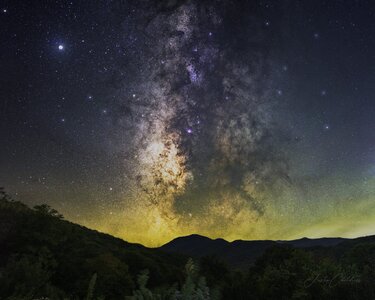Kim_Captures
Active Member
- Followers
- 2
- Following
- 0
- Joined
- Sep 11, 2020
- Posts
- 41
- Likes Received
- 54
- Trophy Points
- 0
- Name
- Kim M
- Country
- United States
- City/State
- Salt Lake City, UT
I've just recently gotten serious about astro photography and feel like I've nailed down my settings. I've taken some single-exposure shots I'm very happy with that needed only minimal work in LR (white balance and dehazing). I'm curious though, what are the advantages (or disadvantages) of stacking exposures? I understand if you're trying to get a distant galaxy or something really faint in the sky, but I seem to see a lot of stacked shots online that aren't that.
I'm not knocking this technique at all -- I genuinely want to learn if this is something I should be doing!
I'm not knocking this technique at all -- I genuinely want to learn if this is something I should be doing!

